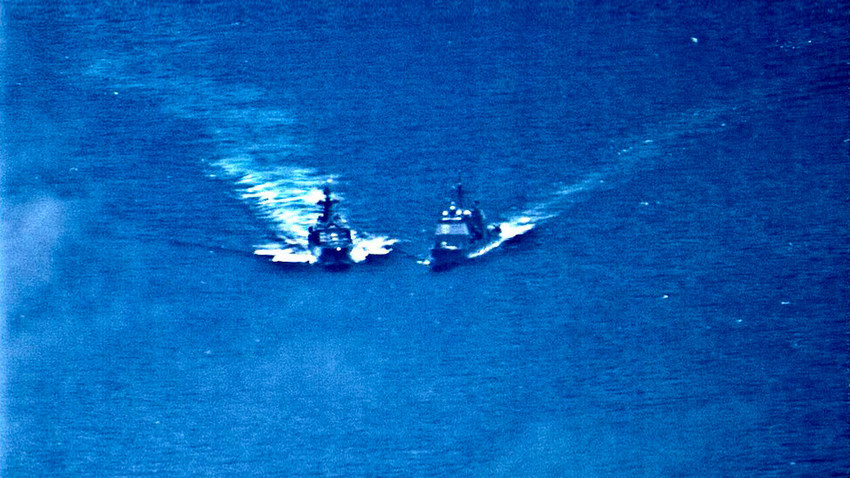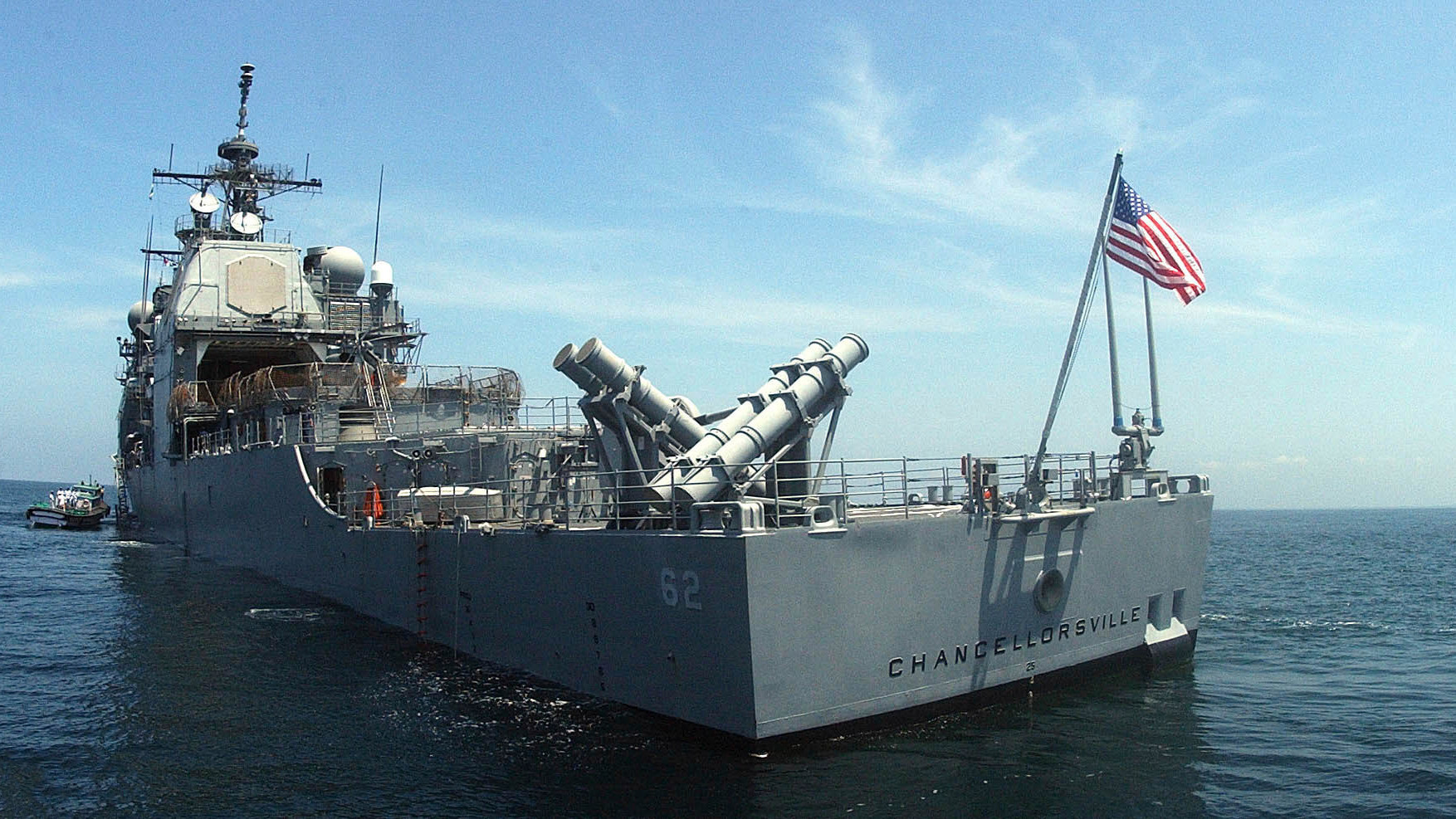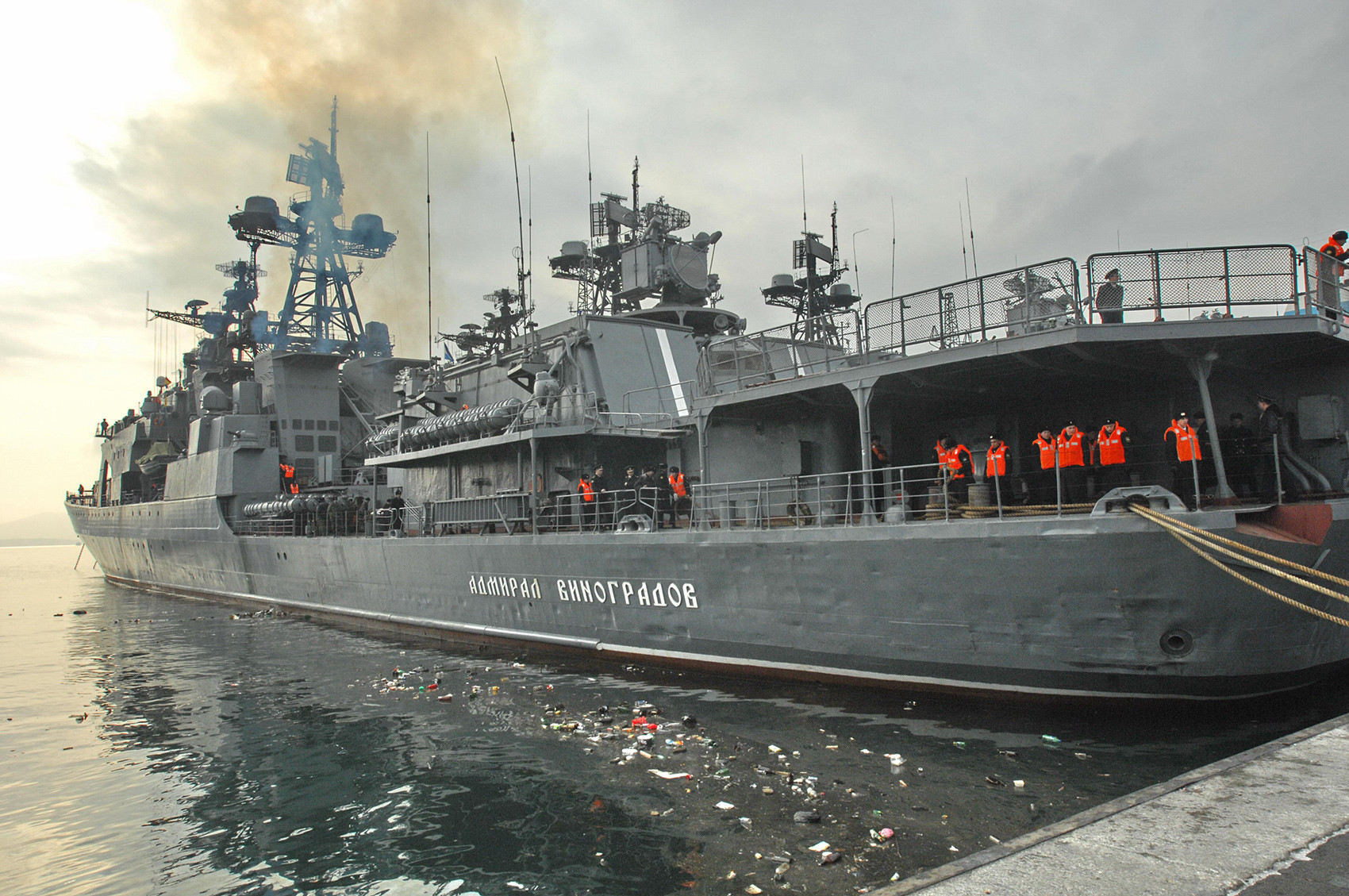3 questions about near-collision between Russian and U.S. ships

What happened?
The incident, involving the missile cruiser USS
Who's to blame?

According to the Russian crew, “the incident took place in the south-eastern part of the East China Sea when a detachment of Russian Pacific Fleet warships found itself on a parallel course with a U.S. naval strike group.”
Unexpectedly for the Russian sailors, USS Chancellorsville suddenly changed direction and crossed ahead of the oncoming Admiral Vinogradov at a distance of just 50 meters, forcing the Russian vessel to perform an emergency maneuver.
That version of events was rejected by the U.S. sailors, who described the Russian claims as “propaganda” and accused the Russian Navy of unprofessionalism and “unsafe activity at sea.” It is Admiral Vinogradov, they assert, that strayed out of its waters.
Clayton Doss,
“It’s pure aggression, just like Cold War times, when conflict situations were created out of thin air. The ships were on a head-on course, a blatant provocation,” Captain Dmitry Litovkin told Russia Beyond.
At the same time, he reckons that blame cannot be
“If the Russians had filmed and made it public, people would have said it was the Americans’ fault. But since it was CNN that reported it, the Russians are the bad guys. Everything happened at sea, not on a road with clearly marked lanes. So it’s not possible to say with certainty who’s in the right and who’s in the wrong,” he believes.
What sort of ships were they?

Chancellorsville (CG-62) is fitted with two MK 41 guided missile vertical launchers with eight Harpoon anti-ship missiles. Beside them on deck are two 127mm Mark 45 naval artillery gun mounts and two 25mm MK 38 machine guns, which can pierce the armor of all modern ships with ease.
The U.S. ship also possesses several torpedo-launching tubes and a helipad for two attack choppers.
Although less formidable, Admiral Vinogradov, a large anti-submarine ship, still boasts an impressive arsenal. Located beneath its armor are up to four Ratrub anti-submarine missile systems, plus two single-barrel 100mm AK-100 naval guns.
On deck are two 45mm semi-automatic 21-K multipurpose cannons, as well as four 30mm AK-630 naval guns. Likewise, the Russian vessel has several torpedo-launching tubes and a helipad also for two attack helicopters.
Each ship had roughly 300 sailors and officers on board when the incident occurred.
If using any of Russia Beyond's content, partly or in full, always provide an active hyperlink to the original material.
Subscribe
to our newsletter!
Get the week's best stories straight to your inbox